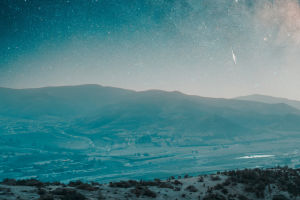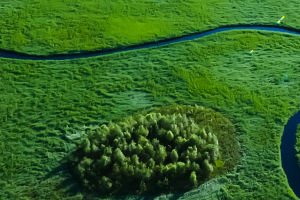Legendary climber Reinhold Messner said that there are three rules of mountaineering: “It’s always further than it looks. It’s always taller than it looks. And it’s always harder than it looks.” Some people seek to tackle icy cliffs in preparation for bigger, more challenging slopes abroad while others simply bask in the beauty of these natural wonders from their base camps.
The most beautiful mountains in the US are a contentious subject, for this is a land that brims with beauty. Below are the most photographed and beautiful mountains in the US. In no particular order, you can read about them below and ideally get your own photos of these gorgeous peaks!
1. Grand Teton, Wyoming
When you imagine mountains, it is often jagged, snowy peaks that look indomitable and foreboding. Grand Teton is all that and more. To reach the 13,770-foot summit, mountaineers work their way through natural challenges like slippery rocks, sheets of ice, and deep snow. If skiing down a mountain from the peak is on your bucket list, you should definitely check out Grand Teton. Also, since the mountain is part of Grand Teton National Park, there are plenty of other outdoor recreational activities if you aren’t up for mountain climbing.
2. Baring Mountain, Washington
Baring Mountain is the third steepest peak in Washington, which is more impressive than it sounds given that the state is notorious for difficult climbs. Baring’s double summit lends it a dramatic aspect and its sheer north face rivals some of the big walls in Yosemite. Efforts to scale the face spanned 10 years until climbers Don Gordon and Ed Cooper completed a successful ascent in July 1961. Today, it goes years without ascents because of poor rock quality and unpredictable weather.
3. Denali aka Mt. McKinley, Alaska
Denali, the HIGHEST mountain in North America, sits at the centerpiece of Denali National Park and Preserve in south-central Alaska. The mountain sits 20,310 feet above sea level and is the third most prominent and third most isolated peak on Earth following Mount Everest in Nepal and Aconcagua in Argentina. Denali National Park is home to nearly 12,000 lakes and glaciers which cover roughly one million acres of the park, about one sixth of the entire park which encompasses six million acres of wild land. Wild animals roam free on these unfenced lands and you can see wildlife all year round. To climb to the top of Denali takes a experienced mountaineer, skilled climber, and avid outdoorsman. There are world class mountaineering and climbing routes on the peak that are only for the very established mountaineer. You need special equipment, guides, or experts to get to the top of this gnarly peak. For those looking to photograph the peak, it won’t be hard to get a good view once you’re in the park. The morning is the prime time to see the peak before it’s shrouded in clouds. Hikes to popular locations are accessible via bus, shuttle, or car. Mid-June to mid-July is the peak time for wildlife. So if you want a vibrant shot, that’s the time to get it.
4. Mount Rainier, Washington
Located in the expansive Mount Rainier National Park, which is famous for picturesque landscapes and alpine flowers, is the majestic (and active) volcano known as Mount Rainier. Just east of Seattle, this stunning snow-capped mountain is a magnet for hikers looking to test their ice-climbing to reach the 14,410-foot tall summit.
Fun fact: Mount Rainier is also on the Decade Volcano list, meaning it is one of the most potentially dangerous volcanoes in the world. Better read up on signs of eruption before you decide to visit!
5. Mount Shasta, California
Mount Shasta sits in the Cascade Range in Siskiyou County, California. With an elevation of 14,179 feet, it’s the second highest peak in the Cascades and fifth in the state. You can ski, hike, or climb Mt. Shasta. But you don’t have to summit or even consider climbing it to get the spectacular views and enjoy the alpine paradise. There are easy hiking paths and loops through wildflower-filled meadows, into alpine forests and along the rivers where you can see waterfalls and streams. Mt. Shasta rises from surrounding flatlands in a perfect, cone-shaped peak formation and you can get spectacular photographs year-round. The snow-topped mountains look beautiful from all angles and I highly recommend going to get that perfect photo at sunrise. Around Mt. Shasta there is world-class fly fishing, camping, and endless spots to disconnect and enjoy the wildlife.


